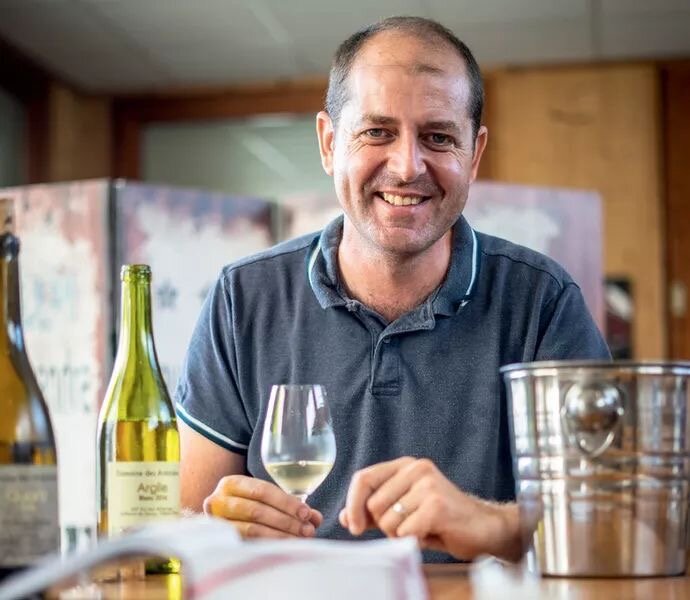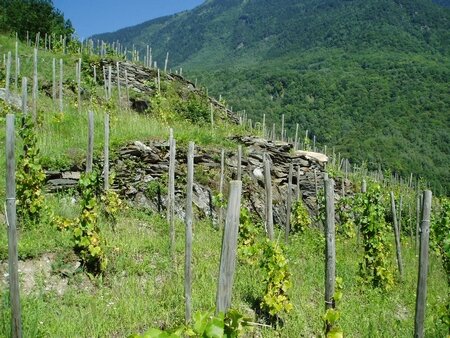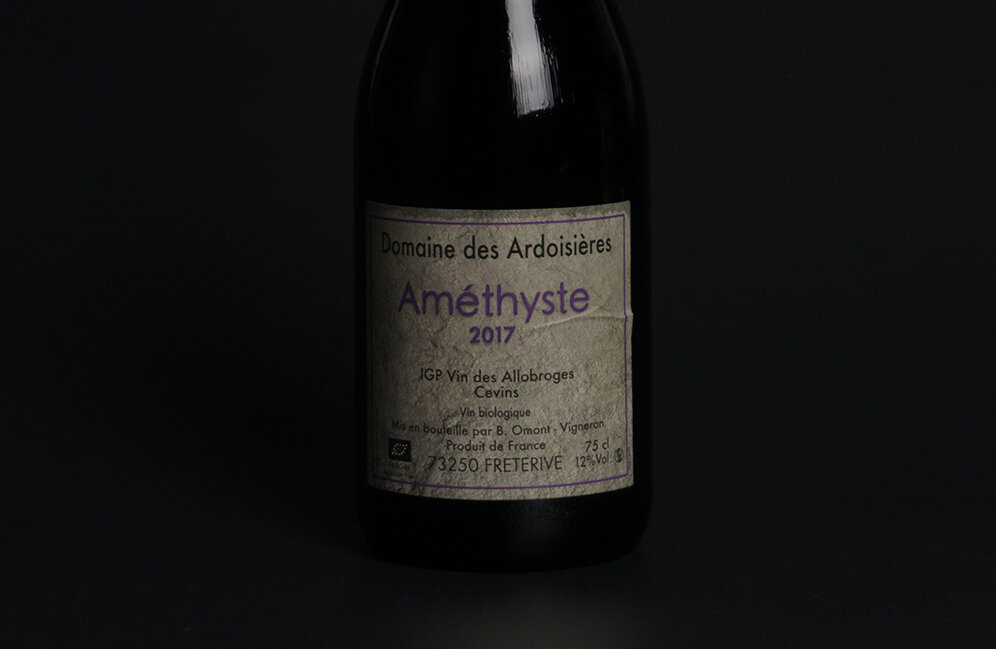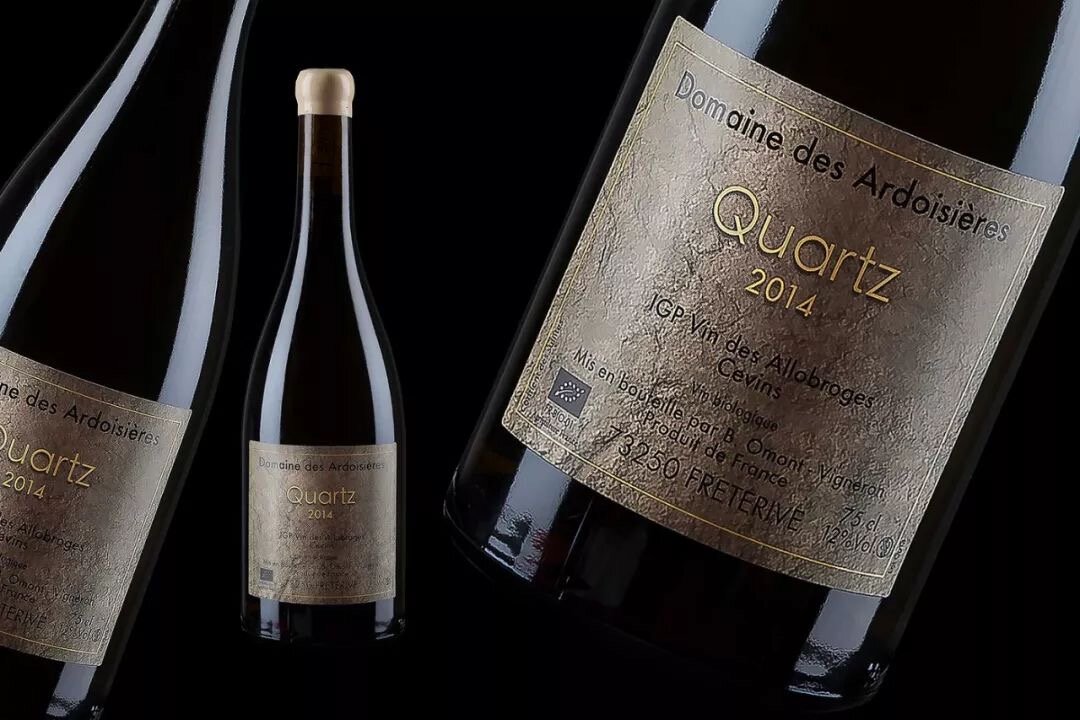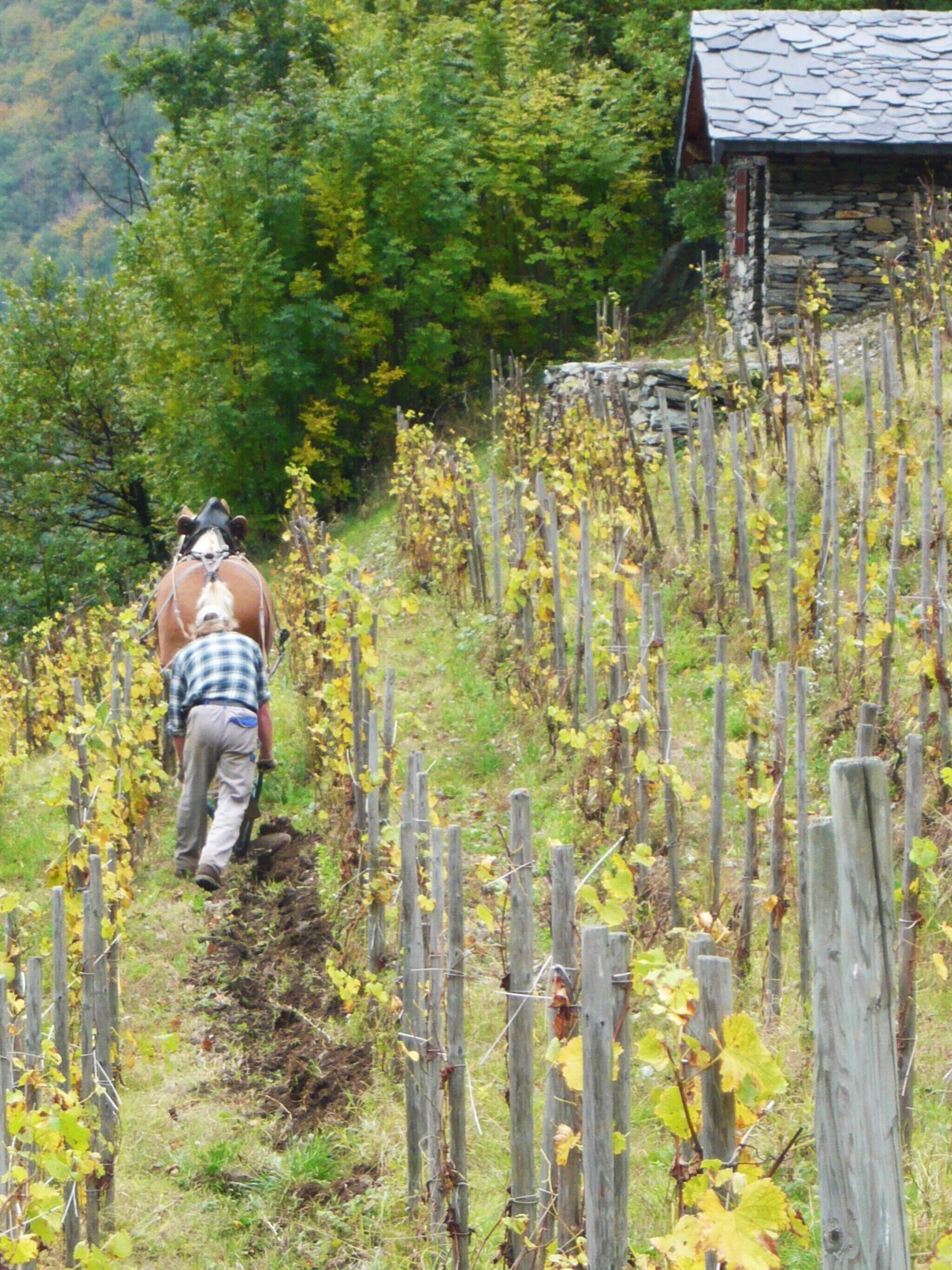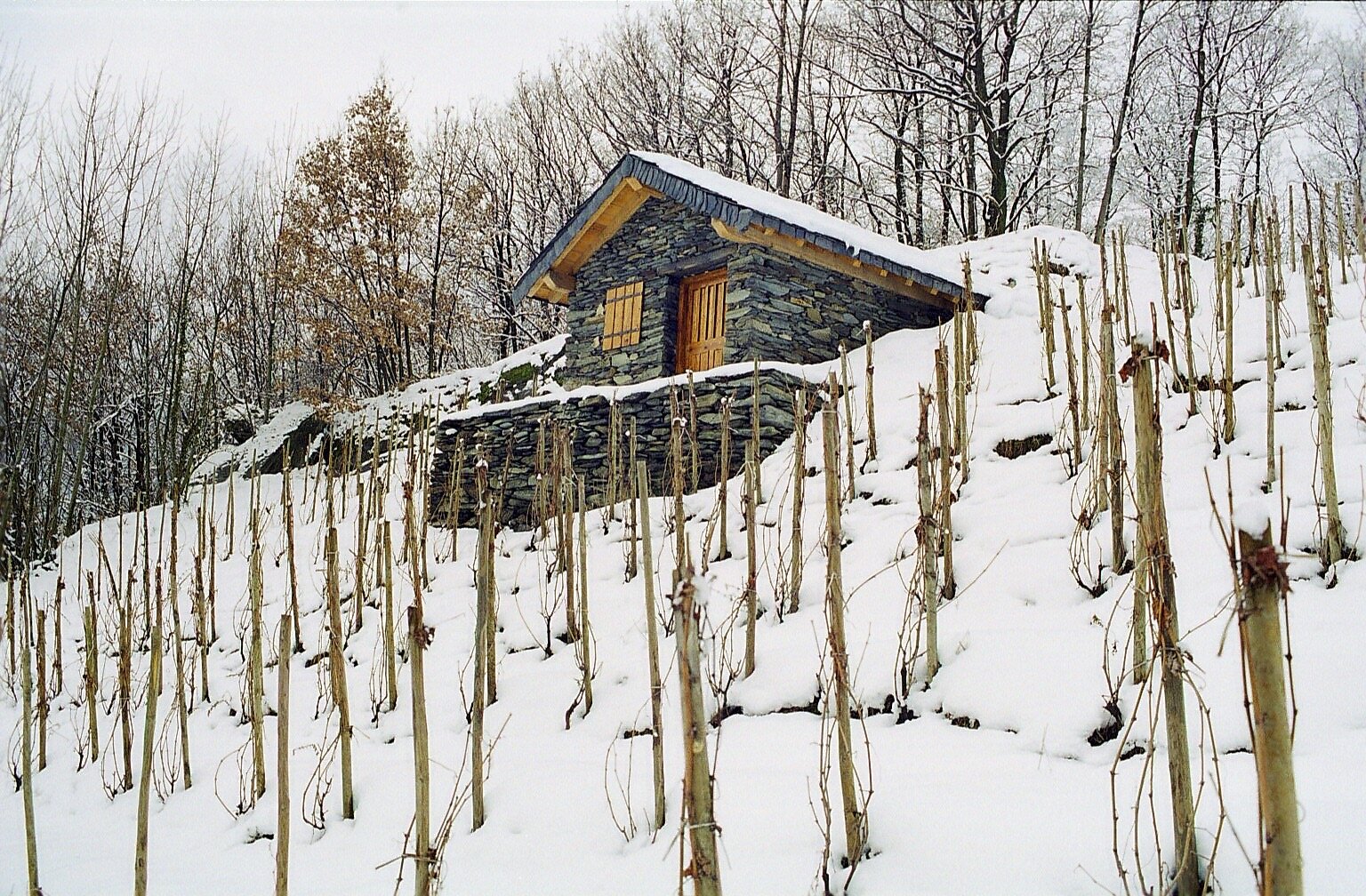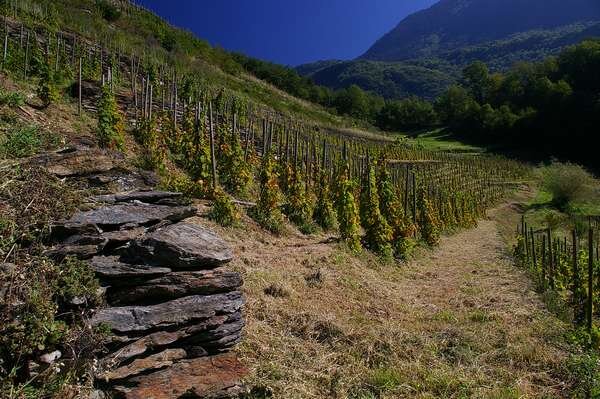DOMAINE DES ARDOISIÈRES
Frétrive
Domaine des Ardoisières first came to life in 1998 when a passionate group of locals led by Michel Grisard started to clear up and pieced back together with the steep terraces of the long-abandoned vineyards of the Côteau de Cevins in Savoie.
Viticulture in the Côteau de Cevins dates back to pre-roman times and before the 1950s winegrowing was still important in the area. Vineyards were then covering more than 20,000 hectares compared to less than 3,000 hectares now.
The project started by Michel Grisard entailed reclaiming 400 plots of land, restoring the terraces, stonewalls, and vineyard cabins. After years of hard work, the 2002 vintage marked the first harvest of Domaine des Ardoisières.
Brice Omont, a Champagne native, joined the team in 2005. He is since 2010 fully in charge of the Domaine.
The domaine’s 16 hectares of vineyards are planted on steep, rocky slopes high above the town of Fréterive. Most of the production is sourced from two single vineyard sites: Cevins and Saint Pierre de Soucy. The vineyard of Cevins lays at 400-500m of altitude on slopes as steep as some of the slops of Côte-Rotie. The vines are planted on poor stony soil on a mica-schist base, which is rare in the limestone dominant landscape of Savoie. The vineyard now covers 6 hectares of vines. Altesse was first re-planted here in 1998, more local varietals were planted between 2000 and 2002. The vineyard of Saint-Pierre de Soucy covers 8 hectares of vines. The vines here are planted on schist-based hillsides but with a greater limestone-clay component. In addition to these 2 main vineyards, the Domaine owns 1 hectare of vines on the scree slopes of Saint-Jean-de-la-Porte and 1.5 hectares in Laissaud.
Today, Brice produces six different cuvées using the local varietals, including Altesse, Jacquère, Mondeuse, Gamay and Persan. Brice’s wines are brilliantly unique, capturing the stony and mineral character of the vineyard terraces, and possessing an amazing crystalline purity.
In the Vineyard
Brice Omont's rigorous work in the vineyard is the true secret to the quality of the wines produced here. Every action done in the vineyard aims to allow the grapes to convey the identity of each plot.
Biodynamic principles have been employed in the vineyard ever since the vines were re-planted. Working the terraced slopes organically and biodynamically calls for a lot of manual labor. Brice Omont has a total of 15 workers throughout the year.
In Cevins, the vines are high-trained and are pruned en gobelet. The vineyard is planted at a density of 8,000 vines per hectare.
In Saint-Pierre de Soucy, the vines are trained on treillis and are pruned en guyot simple or cordon royat. The vineyard is planted at a density of 5,000 vines per hectare.
Yields are kept low in both vineyards. In Cevins they average 25 hectoliters per hectare and in Saint Pierre de Soucy 40 hectoliters per hectare.
In the Cellar
Minimal intervention is the main goal in the cellar. All wines are produced without any de-stemming and are fermented with native yeasts in barrels or tanks.
For the whites, the grapes undergo a light débourbage à froid before the fermentation. For the reds, de-vatting and pressing are performed after 2 to 3 weeks of maceration. Brice Omont practices a little pigeage when fermentation is starting and occasionally remontage. The malolactic fermentation is not systematic on the whites but is on the reds. The aging lasts between 9 and 18 months depending on the cuvée.
The wines are bottled without fining or filtration.
IGP Vin des Allobroges Cevins
Améthyste Rouge
This red is a blend of two local varietals: Persan (60%) and Mondeuse Noire (40%). All of the grapes come from the great terroir of Cevins. Cevins is a south-facing terraced vineyard on a vertiginous 60% slope where the soil is derived from metamorphic mica-schists.
IGP Vin des Allobroges Saint-Pierre de Soucy
Argile Rouge
This red is a blend of Gamay (65%) and Persan (10%) planted on the steep schist-based hillsides of Saint-Pierre-de-Soucy, and Mondeuse Rouge (25%) planted on clay soil in Saint-Jean-de-la-Porte.
IGP Vin des Allobroges Cevins
Schiste Blanc
This white is a blend of Jacquère (40%), Roussette (30%), Pinot Gris (20%), and Mondeuse Blanche (10%). All of the grapes come from the great terroir of Cevins. Cevins is a south-facing terraced vineyard on a vertiginous 60% slope where the soil is derived from metamorphic mica-schists.
IGP Vin des Allobroges Cevins
Quartz Blanc
This white is exclusively made with Altesse coming from the great terroir of Cevins. Cevins is a south-facing terraced vineyard on a vertiginous 60% slope where the soil is derived from metamorphic mica-schists.
IGP Vin des Allobroges Saint-Pierre de Soucy
Argile Blanc
This white is a blend of 3 different varietals: Chardonnay (40%) and Mondeuse Blanche (20%) planted at high altitudes on the steep schist-based hillsides of Saint-Pierre de Soucy and Jacquère (40%) from Apremont. The vines used in the cuvee are on average 40 years old.
IGP Vin des Allobroges
Silice Blanc
Silice is a relatively new cuvée. It is made with Jacquère from organically farmed 50-60-year-old vines planted on limestone scree and clay-limestone soils in Apremont.







